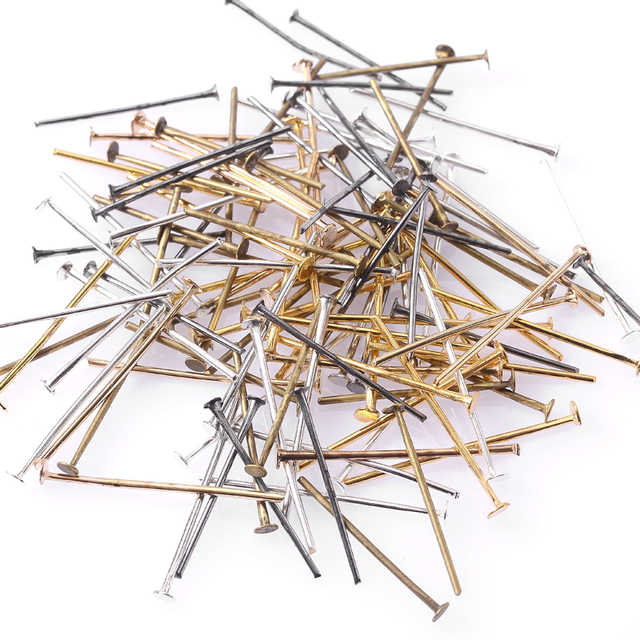
Behind the scenes (information and photos I forgot to put in)
I started off this project with 2 ideas in mind. Functional Jewellery or a lino printing card kit. I laid out that key things I wanted to have in mind were.. being Sustainable, Simple Manufacture, how Parts fitted, Recycling, Materials, Texture and Colour.


Reflecting on my initial proposal I should have kept these ideas closer to my research and development of the project. I was keener on the functional jewellery idea, but it wasn’t initially going to be for people on the spectrum. Here is an extract of the proposal and some ideas for directions I might have ended up taking.
“I’m interested in this idea of jewellery with a purpose more than for wearability and aesthetics. Something that improves the user’s life in some way. Examples I found were games concealed as jewellery, Autism/ADHD jewellery, jewellery that functions as an art tool, navigation and fun bubble making jewellery.”
Right from the start I wasn’t considering the jewellery aspect to be the main draw for the product but rather the function the jewellery could give the user. With little idea of how I wanted the jewellery to look I went to the botanical gardens in Edinburgh for inspiration, thinking that something more natural looking could fit into any of the possible directions for the functional jewellery.
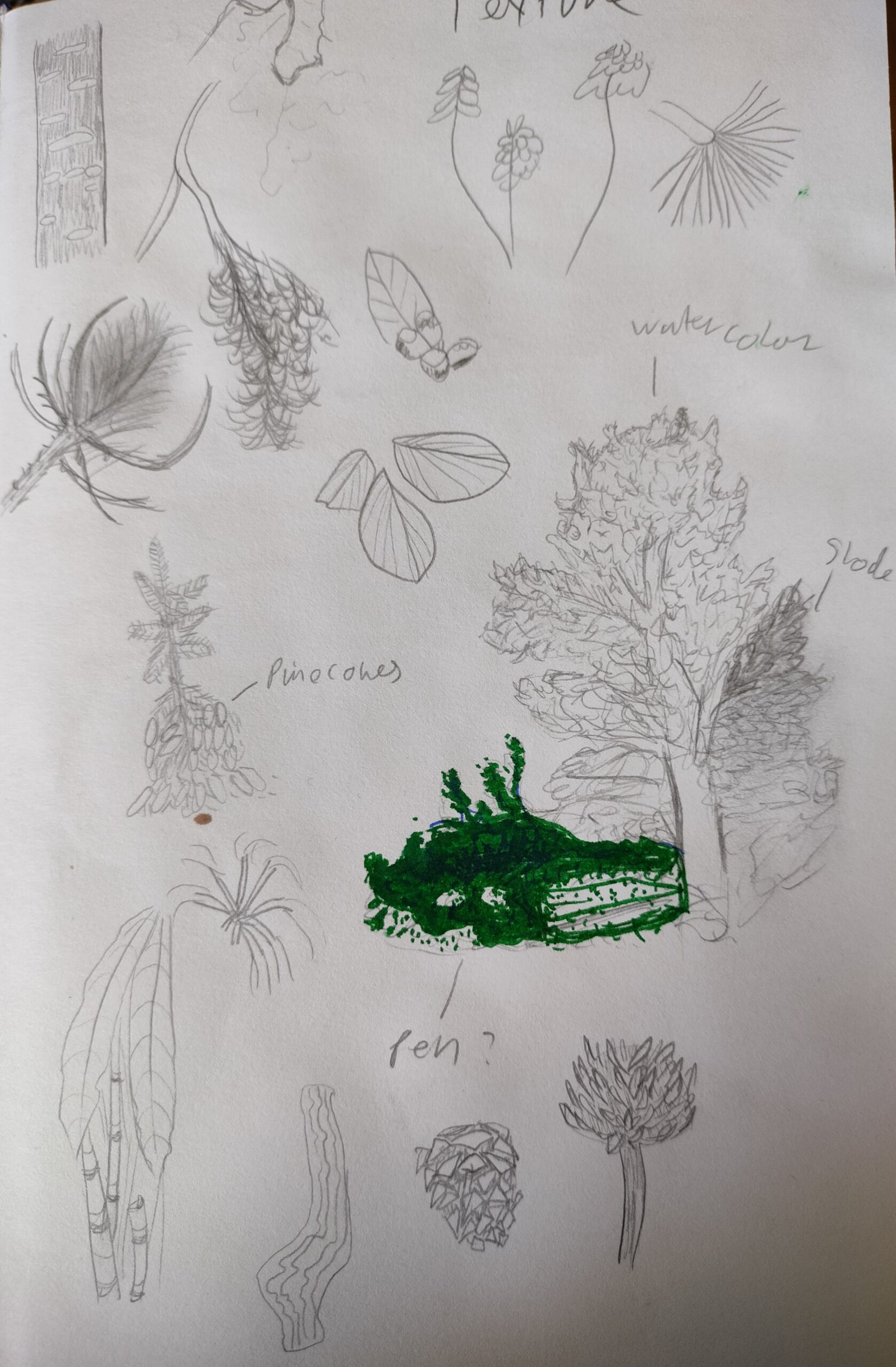
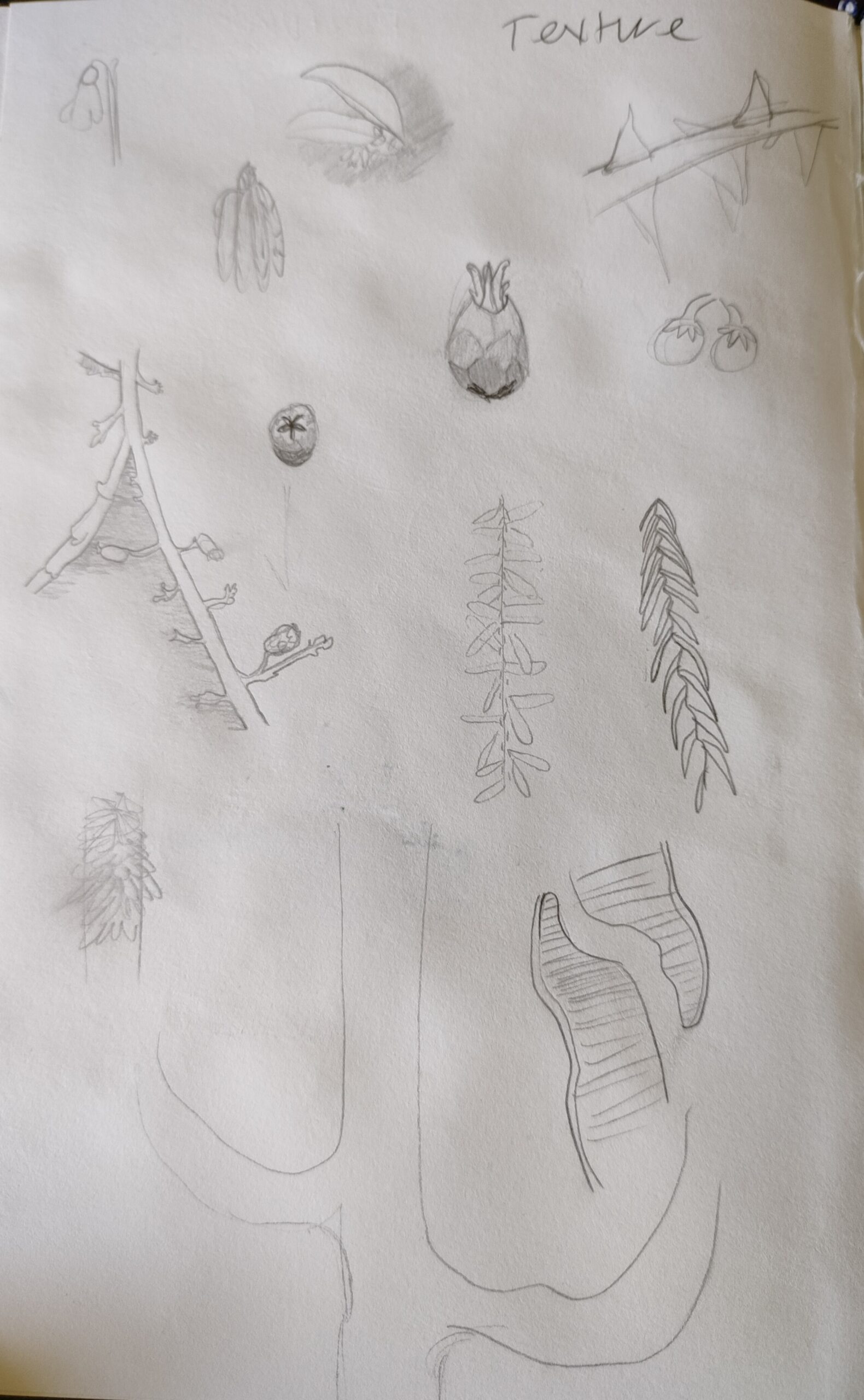
I ended up more drawn to the Adhd/autism angle as it has a personal connection and worth for me. I am dyslexic so I am on the spectrum, more the learning side. But it crosses over with Adhd and autism, so I end up meeting and getting on with a lot of people as we have a shared struggle. Most of my family and friends have on of these disabilities. So I can see how they struggle and what’s helpful for them, I wanted to be helpful and follow my passion for design. This product allows me to do both in the end.
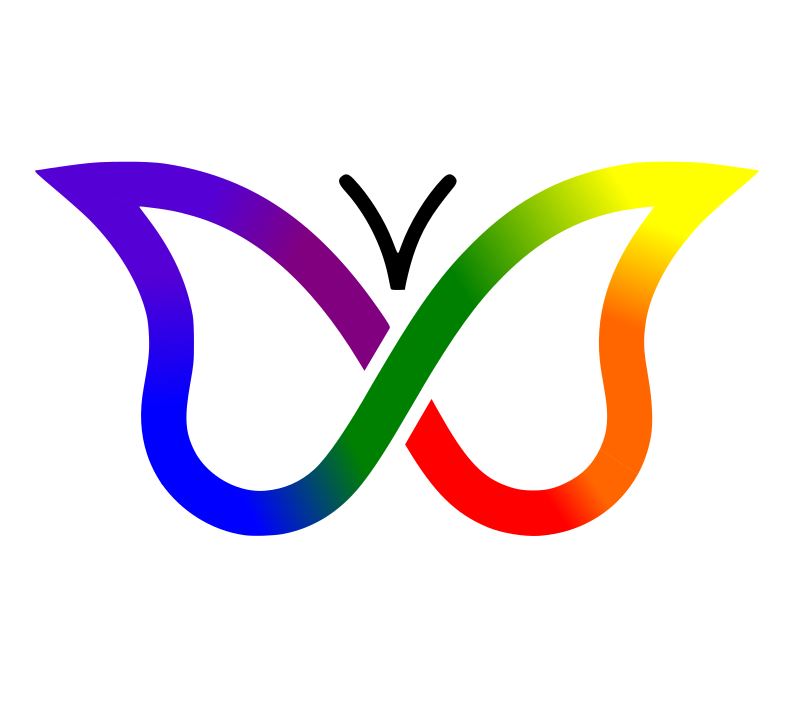
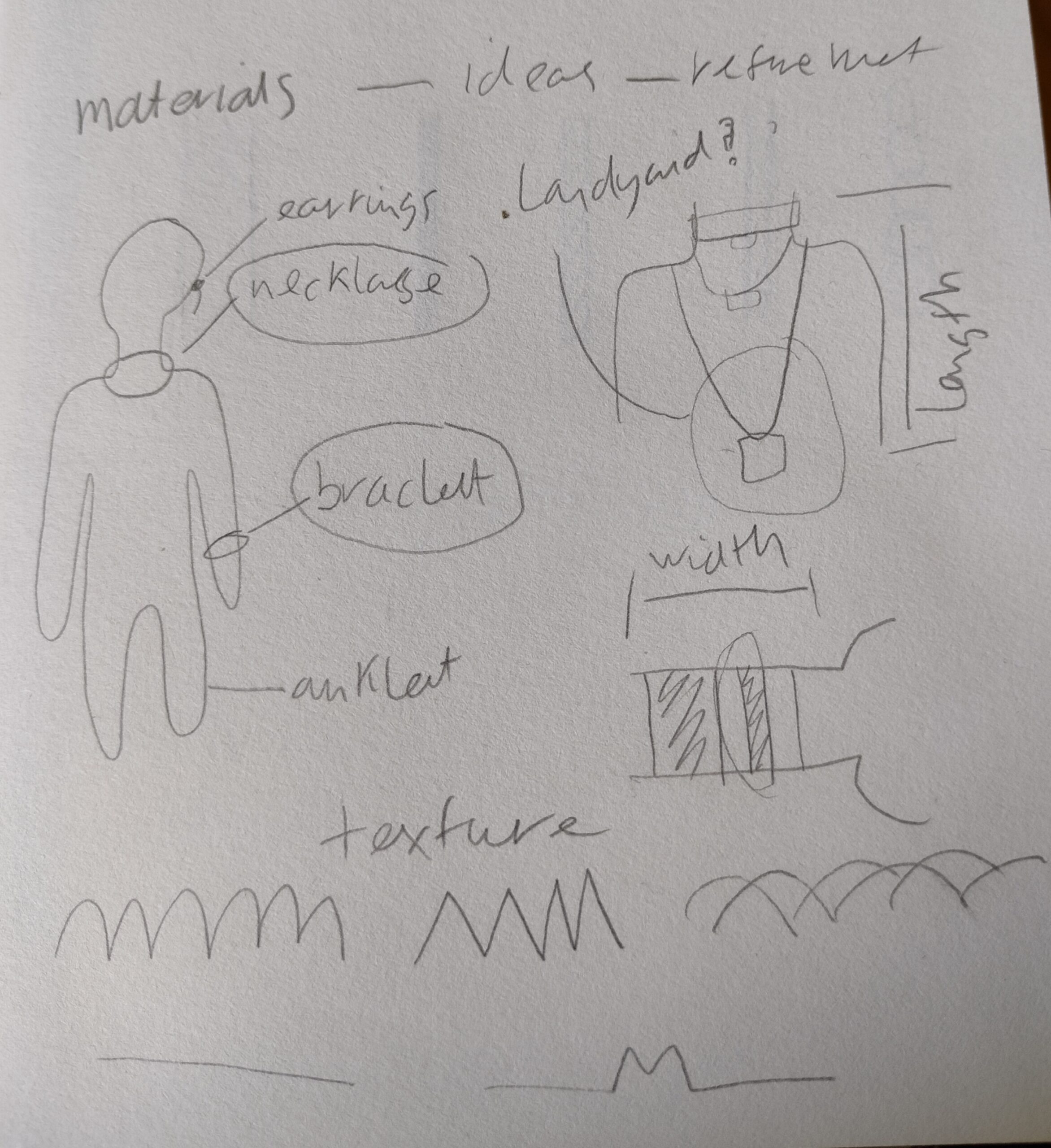
I thoroughly considered what kind of jewellery it should be, earrings, necklace, bracelet even an anklet. But through visual thought experiments in my head I was able to say that a necklace or bracelet would be best, as these are what are fidgeted the most with anyway. Earnings would be too heavy and not the best to pull on your ear. Anklet could work but you would have to be sitting to use it.
I ended up more drawn to the idea of a necklace due to the links to land yards. To show that someone has support needs they can wear a sunflower land yard. With this being an understood concept I didn’t think it was much of a leap to have a necklace that works as a support tool and could be worn in conjunction with the land yard. Though upon reflection because I didn’t write or draw this anywhere I didn’t explore this possibility further.
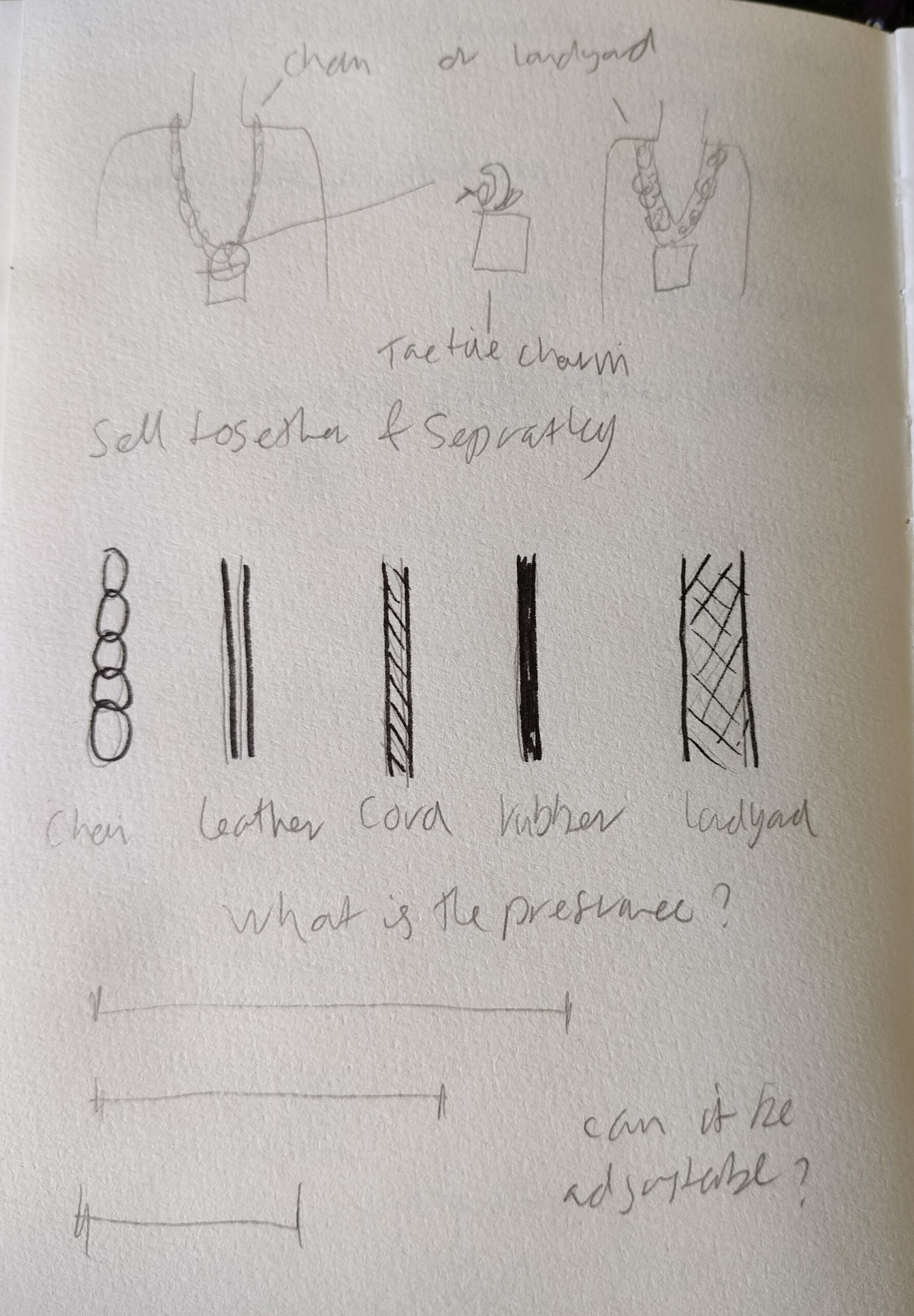
Furthermore reason I did not explore the land yard more was because I was keen on the necklace being seen as jewellery more than just a support tool. Support tools make it obvious that you are different and at times can be quiet isolating. If the product is something common place then it helps to break this stigma and reduce the affects of people assuming you are incapable just because you have support needs. I wanted to treat the user with respect, giving them something that can help without putting up barriers that might make it harder to get to use the product due to the sigma people associate with Adhd and autism.
A lot of these initial thoughts and research got lost in the design process as I got told more by SDX to make a simple charm for the necklace, to get that out the way before thinking of more detail. In their words to get my “bread and butter” product made first. By having a simple and easy to make first product it helps to get the ball rolling, create attention for the product before I can go in more depth and develop the product into more areas that could help people. Such as explore the bracelet, land yard and even the anklet options.
Part of me thought I needed a theme for the project, like nature, dinosaurs, or even rocks. But this became less of a focus as I switched for simple shapes that felt good in your hands, almost akin to coloured wooden blocks we would play with as kids, getting used to simple shapes and colours. This approach allowed me to focus on the function, this really is a function over form product. With kind of goes against what most people would associate with what a necklace should be. As a necklace tends to be a more aesthetical piece with form being over function. But as this is a Functional necklace I felt the function should come first and be my focus. As without the functions this necklace can not help the intended user, can not have that positive impact on people that I want to carry in my work.
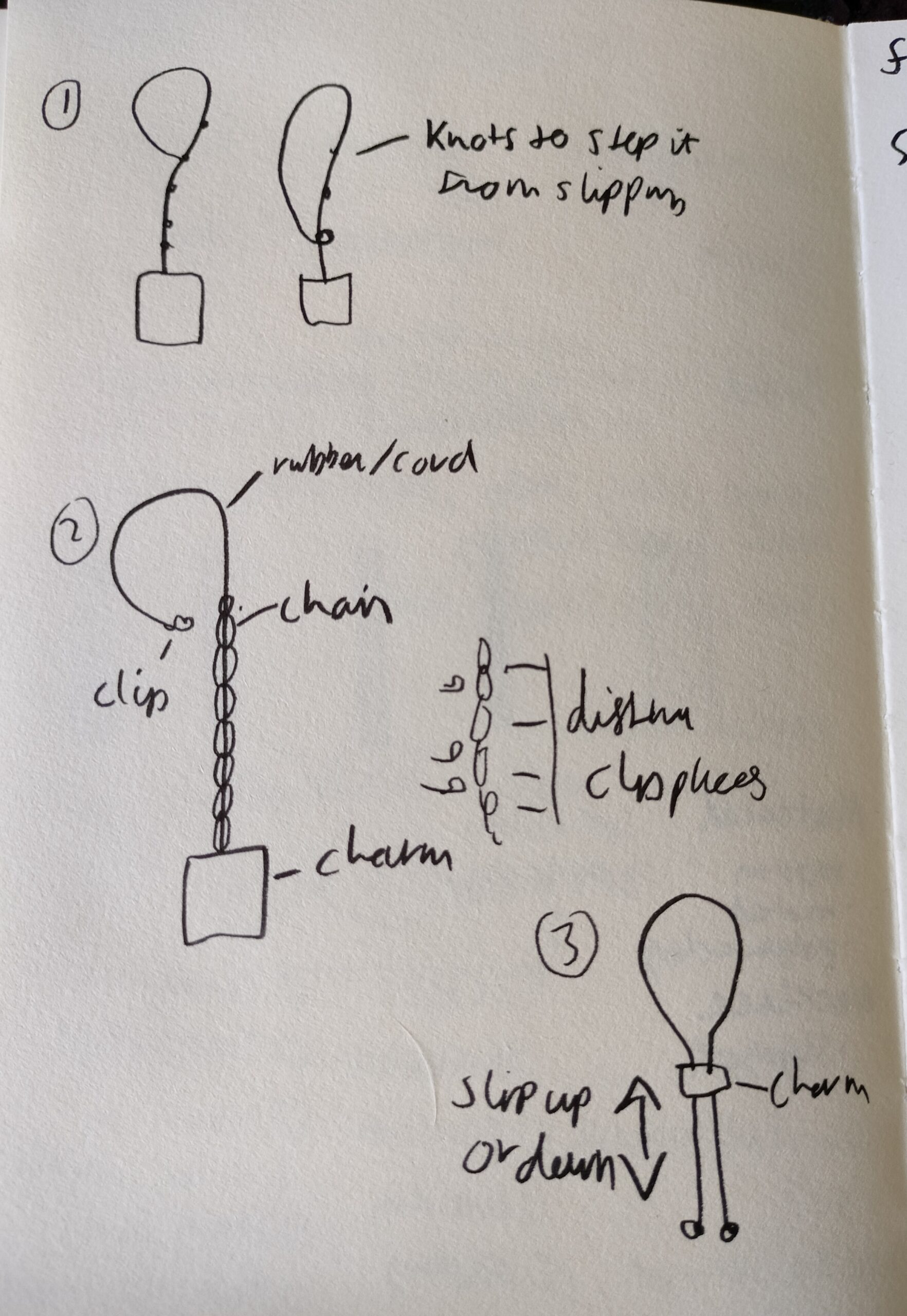
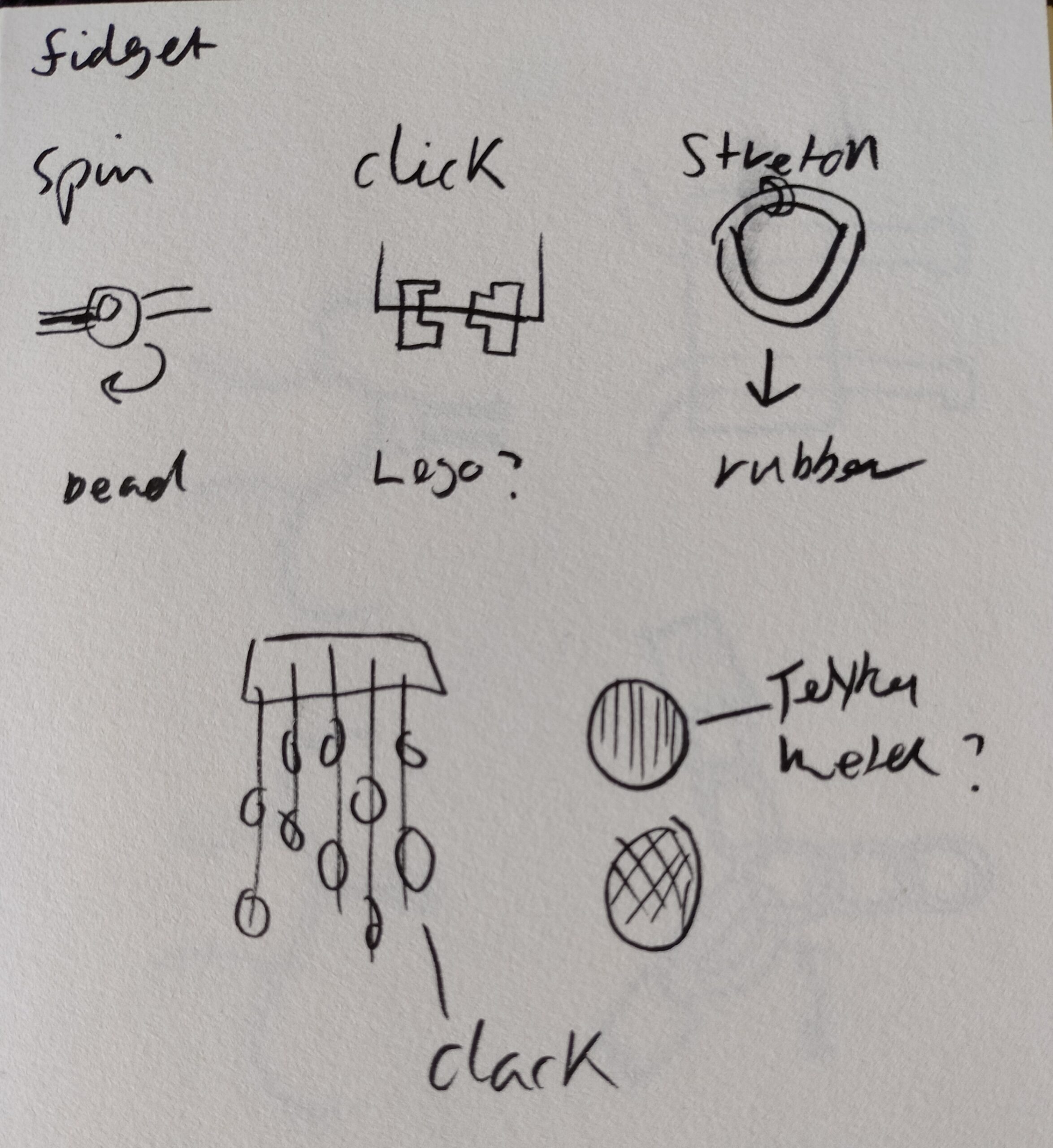
How I ended up going where I ended up was I started with these complex ideas that in my head felt like tactile objects that I could visualise me playing with. Then drew them, took these on a journey to take the core fidget function and simplify it into less beads and therefor better function in conjunction with manufacturing time/costs.
As I was not satisfied with this development finding the designs to be lacking something, I decided to take my top 5 and combine them in different ways to see what interesting amalgamations this experiment would product. Which did result in an idea I took forward that did add that spark I was looking for. Though this idea didn’t make it to final production as it was harder than the others to make. It is a design I would want to make once I’m more experienced with working with the clay.
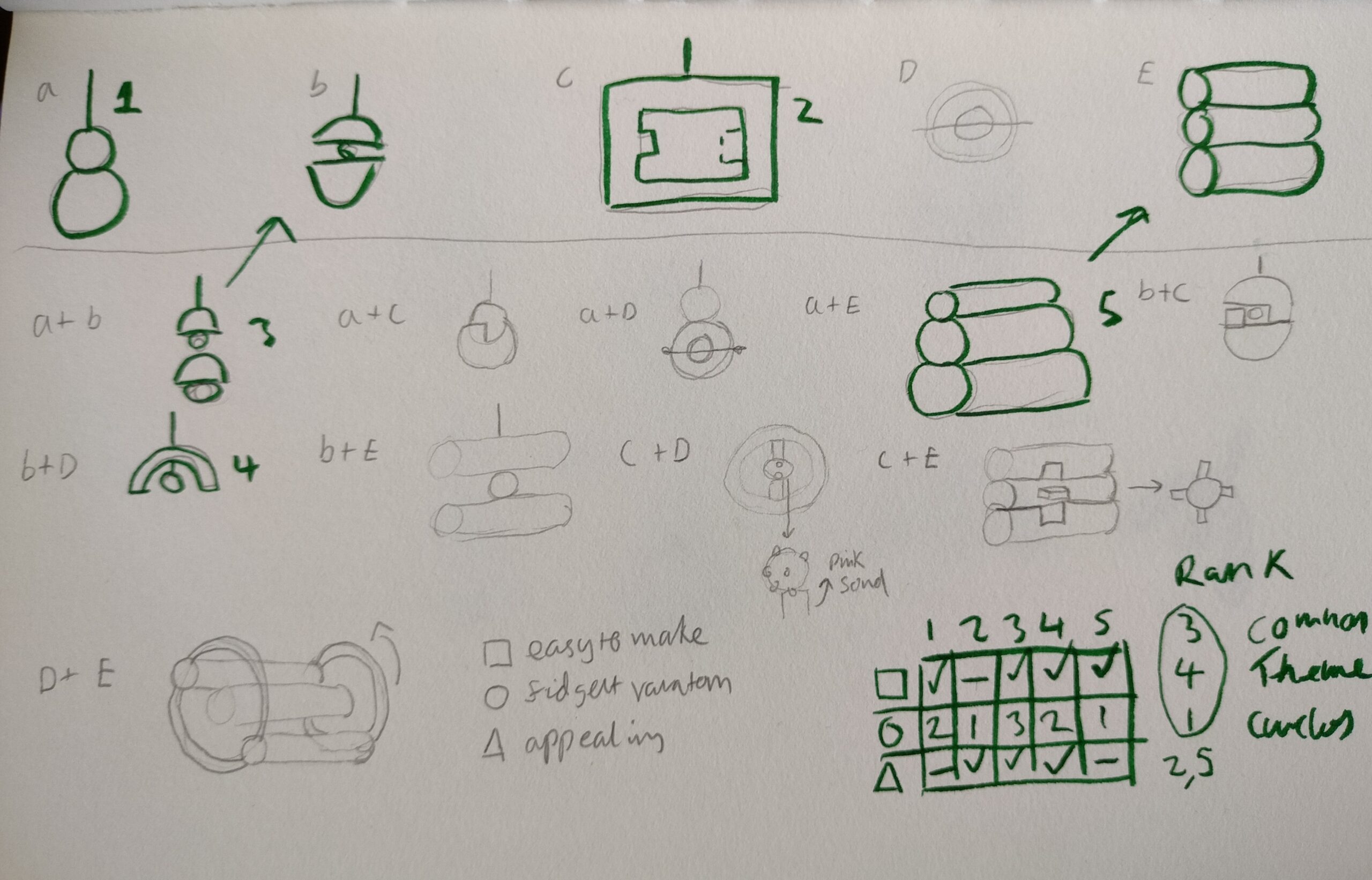
Also I don’t know if I properly explained when and why the keychain aspect came into play. It was expressed to me that some people might want their fidgeting to be less obvious and could like a keychain as a more discreate way to fidget and help anxiety around owning such a support tool. However undertaking both necklaces and a keychain would have required more time and resources than I could at that time provide. So by allowing the necklace to come apart easily and become a keychain at the discretion of the user then they can use it as and when they need for whatever situation. Also keeps cost in mind for the user that they don’t have to then buy two products. But this is something I would consider making into 2 sperate products in future due to aesthetical and marketing reasons.
Oh and to address some design decisions that were expressed to me to not be clear enough, in relation to the photo below.
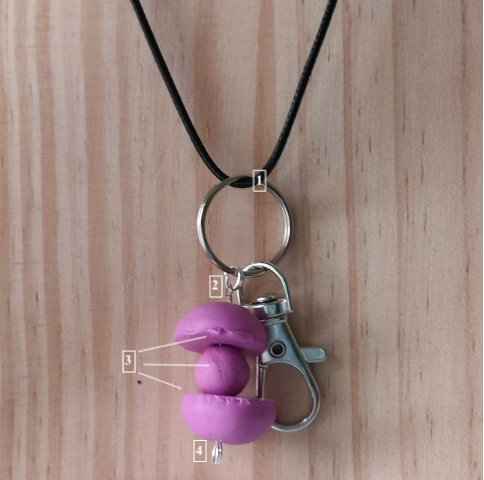
1. You wouldn’t attach the neckless string to the keychain ring – it should be directly attached to the smaller ring below. The reason the charm is attached to the keyring rather than directly to the necklace is due to how the parts function as well as how the product is used. The rings I ended up getting to make the charms is made in such a way that makes them impossible to open and therefore I can’t open them to put on the necklace, they are too small to simply slip onto the necklace. Next point the keychain loop, its there to allow the charm to be easily slipped off the necklace and causes less faff when all you now have to do is slip on the keychain clip to use on a land yard, keys, or bag. In this situation function need to overtake form.
2. The wire attaches the small ring looks rough and fragile. This is a prototype product, so I hadn’t refined my skills with the wire yet. This has since been fixed and the wire is more than cable of withstanding wear and tear as it is a jewellery intended wire. In future I would have liked to use other means of attachment, but this is what I could do within my budget and timeframe. It is now made so the beads hide these edges and is wrapped in such a way that makes it stronger.
3. The edges and surfaces should be smooth and uniform, and the ball is not a perfect spherical shape. This was a prototype, I had just started to learn to use a new tool, something that was intended to make the beads more uniform and consistent across the board. However this is a soft clay and takes on dents and pressure very easily and must be worked with carefully to achieve the best results, the sort of thing I have learned to work with as I made more. Again being fairly new to working with the clay on a professional level. A handmade craft to be perfected overtime. More to this ST-mango, one of the designers at SDX makes cherry earrings with the same clay and has struggled to get the balls perfect, it is very hard even for a professional to do. And they were the one who suggested the tools I could use to try and improve this. So this is really as good as the ball can get with my level of tools and understanding of the craft.
4. The bottom ring looks unfinished – it currently looks like the something attached to it had gone missing. Maybe look at a flatter end like this* rather than a small ring. I had been hoping to move to use something similar as suggested but due to the budget, time, and cost all having to fit to the tight deadline that was fast approaching I had to use this creative solution till such time as I see profit from the project and can then afford to look into improving this manufacturing technique. Trying to work within my means. But definitely the sort of thing I had wanted to implement in future.
*see image bellow
